Alrighty then. Yet another list. This time, I stray into the territory of movies. I grew up watching many older films and I decided to put together a list of nostalgia. I’ll be doing a television version of this list later.
Note: This list is in no particular order.
Another note: I am most likely forgetting a ton of movies, all of which I will probably remember as soon as I go to sleep tonight. Hooray.
Honorable Mentions:
These are movies that would’ve made this list if I had watched them:
Clerks
The Third Man
Double Indemnity
Psycho
Metropolis
To Kill a Mockingbird
On the Waterfront
Casablanca (Yes, I haven’t seen Casablanca. So sue me.)
Dr. Strangelove (Yes, yes, I haven’t seen Strangelove either. I actually haven’t seen any of Kubrick’s stuff. Stop yelling at me!)
#14: Witness for the Prosecution
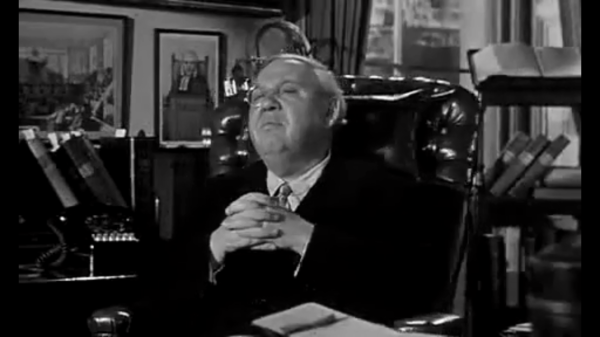
A suspenseful courtroom thriller with a twist-ending worthy of Alfred Hitchcock (well, it was made by Agatha Christie, so I guess it was saying it was worthy of her is pretty good in and of itself), Witness for the Prosecution is one of those movies that has stuck with me. There will be a couple of movies on this list that are similar in terms of setting or plot, but Witness for the Prosecution is special. Why? It has mother-friggin’ Charles Laughton, displayed above being awesome. This guy is just a boss. If you want more evidence of how much of a boss he is, check out his performances in Spartacus or Mutiny on the Bounty. Why aren’t they on this list? ‘Cause this is my list, so ha!
#13: The Treasure of Sierra Madre
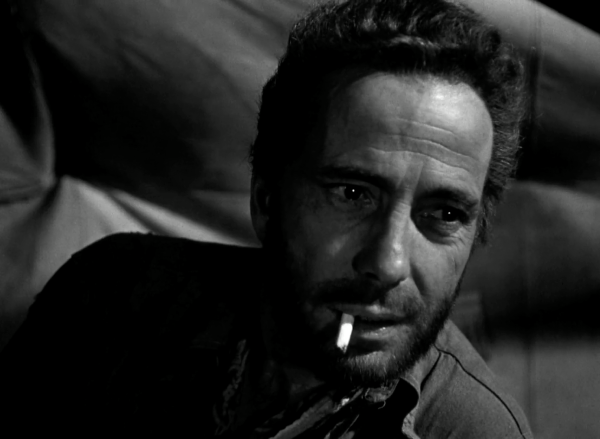
Humphrey Bogart fans, take heart that this will not be the only Bogart flick to make this list. Happy? Good.
Bogart is not known for his ability to act desperate, but he can, and in my opinion this movie is the best example of this. Bogart gets down and dirty in this film about a pair of greedy gold-diggers. In this film, you see a side of the suave Bogart that you haven’t seen before, and that’s what makes this film so great. John Huston brings out the dark of each and every member of the mining team, as they slowly give in to their desires.
#12: The Jimmy Stewart Collection
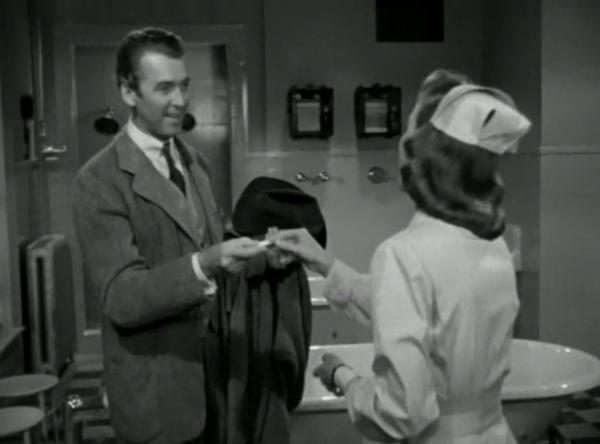
Jimmy Stewart is such a fun guy to watch. Sure, he really only acts in one way, but it’s still pretty fun. He does a lot of work within his character, and he’s able to bring out the correct aspects of the character every time. From the impassioned Jefferson Smith in Mr. Smith Goes to Washington, to the whimsical Elwood P. Dowd in Harvey, to the frustrated businessman George Bailey in It’s a Wonderful Life, Jimmy Stewart never feels wrong for whatever role he plays. It’s as if the character itself warms up to the actor and allows the actor to become it. Like a wand chooses it’s master, so to at times does the role choose the actor. Jimmy, thanks for being great at what you do.
#11: Modern Times
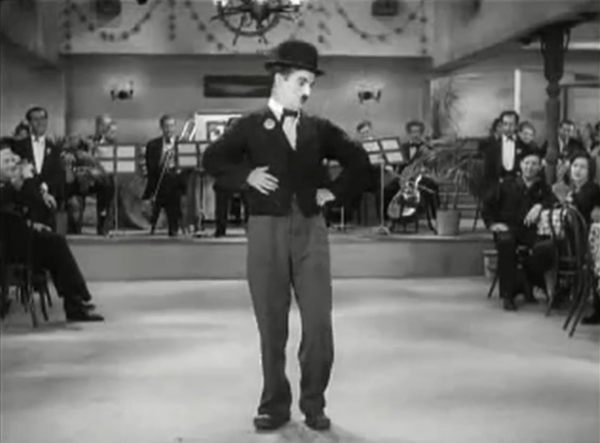
Charlie Chaplin was an terrific artist far ahead of his time, and his name is one that rings often in the ears and sits often on the tongue of classic film buffs. While I could’ve done something similar to the previous entry and included all of Chaplin’s work, I decided to put Modern Times specifically on this list, due to it’s extreme relevance to today’s world. To be honest, this movie will probably be relevant until the day humanity is gone from this world. That is how clear and beautiful the message of this story is, and Chaplin drives home the ideas behind the American Dream in a manner suiting his abilities and the long history of successes that he has seen. Thanks Chaplin.
#10: The Maltese Falcon
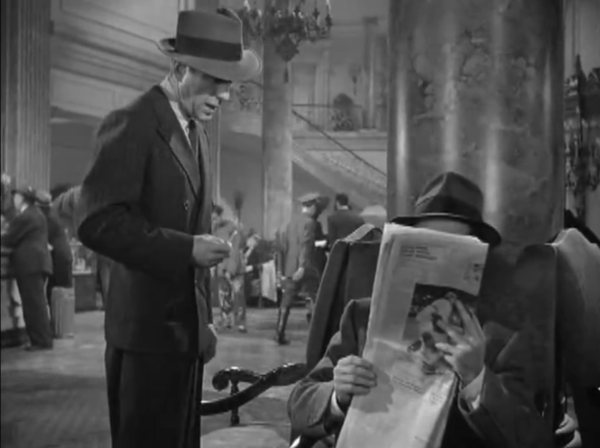
Now that’s more like it. This is the Bogart I first fell in love with. The cool, the rough-necked, the detective. For me, Bogart’s Sam Spade is the default noir protagonist. When I think of film noir, I think Bogart and this film. The terrific cast along with Bogart go for a ride backed against a dreary and dark world, with dreams of a black bird swirling around them. This is the stuff dreams are made of.
#9: The Thin Man
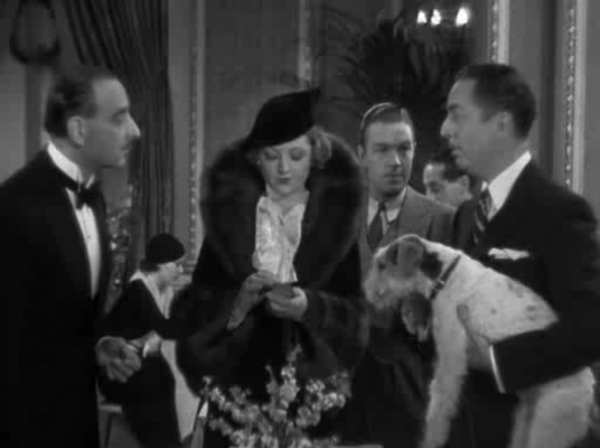
This is a personal fave of mine. I was introduced to this by my parents (who introduced me to most of the films on this list, as well as the classic film genre in general). William Powell and Myran Loy have an intense comedic chemistry that you can’t manufacture. It’s the kind of thing that comedian pairs try to imitate today, but only serve to bore audiences everywhere. Powell plays a semi-retired detective who gets back to work when the daughter of an associate begins to suspect that her father has been murdered. Loy plays Powell’s wife, an constantly active rich woman who persuades her husband to get on the case so that she can tag along for fun. It’s a cute movie with an interesting (if cliched) murder mystery. Check it out.
#8: Good Night and Good Luck
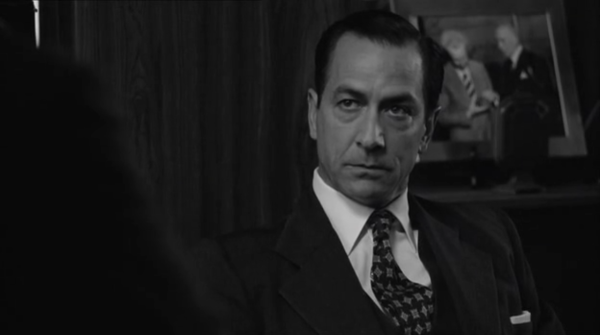
This will not be the only modern movie retrofitted to be in grayscale, so any you are thinking of could still make it. You may actually be wondering why a movie such as this even made it. In my most objective state, this movie is okay, but preachy at even some of it’s better moments. Sure, it’s a nice history piece, but besides that there’s isn’t much here. The cast is packed with a roster that could form an “Expendables”-type team of Hollywood heavyweights, but with less muscle and more acting chops. You’ve got David Straithairn, George Clooney, Jeff Daniels, Robert Downey Jr., Frank Langella and the list goes on. So why is this movie so boring?
Well, it isn’t. Yeah, I know I just trash-talked it, but it really isn’t a boring movie, but only if you get into it. You have to be willing to let yourself get into the time and place, something that audiences back in 2005, and probably audiences today as well, aren’t ready or willing to do. Thus, the movie was labelled boring and the plot was considered as grey as the color of the screen. I, on the other hand, thought it was a great movie, and a terrific experience with pretty decent rewatchability. Thus, it’s here. Deal with it.
#7: The Manchurian Candidate
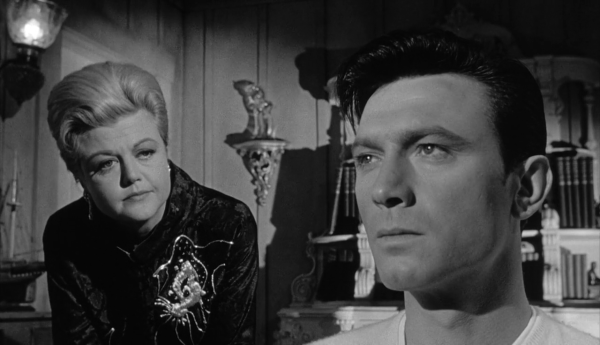
Jesus H. Christ. This movie is… wow. I remember when I picked it up from the library one day to watch, on a whim. Me and my mom watched it together that afternoon. After it was over, I knew exactly what we were both thinking. First: “Who the hell is Laurence Harvey, and why haven’t I heard of him before?”. Second: “Damn, that woman from Murder, She Wrote is evil!”.
Just watch this movie. Go watch it now. It’s just too good. No, not the one with Denzel in it. He’s not good in this.
#6: Citizen Kane
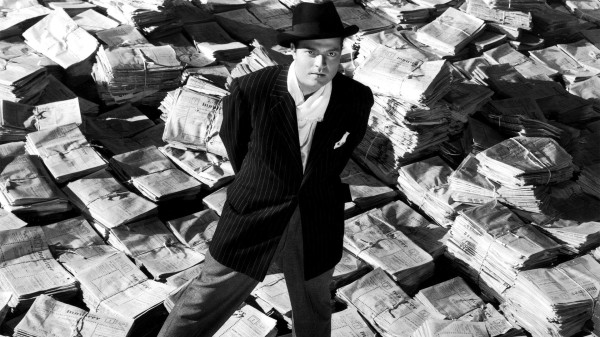
“Wait, it’s not #1?” That was what you thought, wasn’t it? Well, to refresh your memory, I wrote at the top of this post that this list is in no particular order. So there.
What can I say about Citizen Kane or Orson Welles that hasn’t been said already? Nothing. So I won’t belabor the point. Orson Welles is probably one of the most revolutionary and ahead-of-his-time people I have ever seen on the big screen, and there are very few people who will argue against that opinion. He just makes you feel like, by the end, you’ve seen something special. You watched something that was just for you, a personal viewing into a human brain, a personality. You’ve watched something be born, watched it’s life of trials and tribulations and watched it’s inevitable and inexorable death. It was all so beautiful and so pitiful. It makes me think of the root for the word “pathetic”, with is “pathos”. Pathos in Greek can mean “suffering” or “experience”. It’s safe to say that Citizen Kane is a great example of pathos used in film, to show suffering and experiences to an audience until they can only cry out for it all to stop.
It’s a real shame about those fish stick commercials though. Yup, real shame.
#5: Seven Samurai
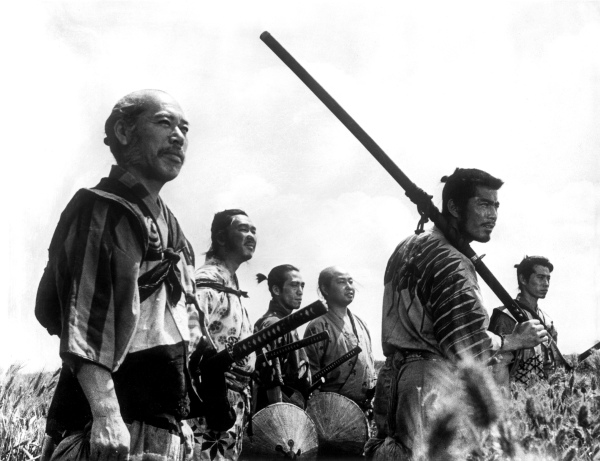
It wouldn’t be right for me not to put an Akira Kurosawa film on this list, despite not having seen that many of them. A pioneer in film-making not just in his home country of Japan, Kurosawa’s technique and unique style put him in stark contrast with the pieces of film being produced in North America. Seven Samurai is but one example of his brilliance, but it’s widely considered as one of his best films. There’s really not much more to say; his movies have been copied so much that even if you haven’t seen one of his movies, you’ve still technically seen parts of them, as they’ve been appropriated in part by North American filmmakers. The Magnificent Seven is probably one of the better examples, although that is more of a transposition of the original Seven Samurai to the Wild West setting rather than an homage.
#4: Arsenic and Old Lace
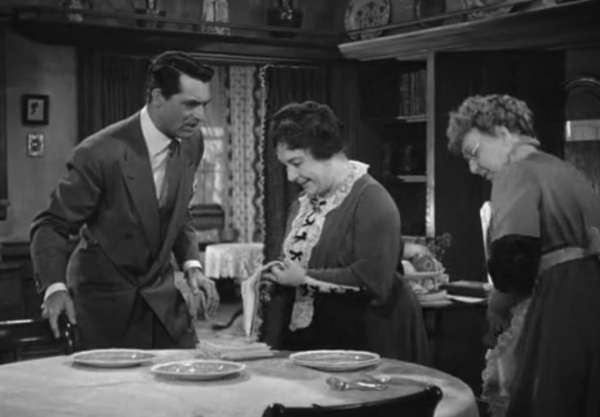
I love Cary Grant. I love him so very much. He’s easily in my list of top favorite actors (oh, I’ve got another list idea). However, he isn’t the only reason that this 1944 Frank Capra flick is on this list. Built like a stage play, Arsenic and Old Lace tells the story about a single night, when self-proclaimed bachelor-for-life Mortimer Brewster returns to his childhood home to ask for his Aunts’ blessings, only to find out that his Aunt’s have been poisoning strangers and burying them in the basement because they seemed lonely. With more than enough hilarity and horror for the 2 hour timestamp, this film promises to be an enjoyable ride even after several rewatches.
#3: Animal Crackers
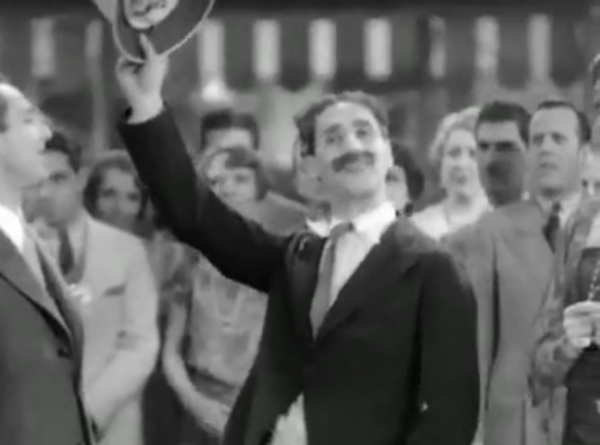
I love the Marx Brothers. I love them so very much. Wait, haven’t I said that before? Oh whatever. Anyways, yeah. Awesome comedic team. Awesome movie. Hooray for Captain Spaulding.
#2: The Man Who Shot Liberty Valance
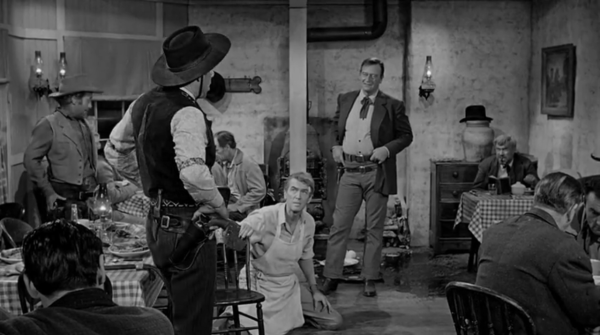
Well, I needed a Western for this list. I decided to pick the only Western with John Wayne that is completely atypical of the Western genre. The Man Who Shot Liberty Valance is less a Western film than it is a movie about the Western hero. Wayne is no pushover when it comes to that role, and has played it on more than several occasions before and after this film. However, this would be one of the only times when Wayne is faced with an enemy that can not be tackled with quick draw, because that enemy can not be seen or touched. It’s an enemy that shares the same goal as it, but differs in terms of the means by which to reach that goal. That enemy is “civilized society”.
Wayne’s “tough it out”, mano-a-mano approach to life is the epitome of the Western genre, and of the manifest destiny philosophy that caused many a European settler to move westward in the first place. However, as time passed, the way by which disputes were settled changed, because the people thought that fairness and impartiality could be manufactured. Thus, the court of law was established. Of course, the West did not invent the court of law, but they did create a system that expedited justice. The people who brought law to America thought that because their intentions were good, the execution of their plan would go smoothly, because obviously everyone wants fairness and justice. However, this philosophy clashed with the “if it isn’t broken, don’t fix it” philosophy that had worked just fine for the Western settlers. These people were doing just fine on their own, and the expansion of other ways of thought that called for a drastic change in how things were done and how disputes were settled would mean the end of the Western hero. The Man Who Shot Liberty Valance is about the struggle between two sides of the same coin, and about the difference between being good and being right.
#1: Schindler’s List
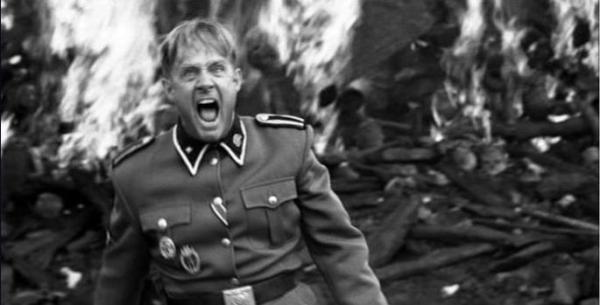
I will ignore the beginning and ending moments of the film which were in color, because I think those are irrelevant when it comes to the bulk of the film. Well, that isn’t technically correct, but let’s not be picky. This is a great movie, so let’s just leave any and all pesky issues of inaccuracy at the door. I mean, I don’t cry much in movies. I’m pretty stone cold (STEVE AUSTIN!!) when it comes to things like human emotion or empathy. However, the ending of this film when Schindler starts crying, “I could’ve saved more,” got my eyes a bit wet. After more than 3 hours of watching Jews treated like cattle while a German playing straw-millionaire bets his life on the business gamble of the decade, I was on the edge of my seat. When Schindler finally cracked, I was ready to let some emotion in. Ralph Fiennes and Ben Kingsley also put up amazing performances in the film. Overall, it was a huge effort and a truly horrifying depiction of the Nazi persecution.
Phew! Man, I’m so done with life right now. I just want to sleep.
Alright, time to watch 12 Years a Slave. That’ll cheer my up, right? Thanks for reading, and have a great day!
Amazing list, very cool! 🙂